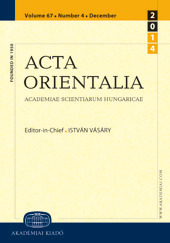Post-Ottoman Cities: Changes in the Urban Structure of the Ottoman and Tatar Crimea after the Russian Annexation until the Crimean War (1783-1853/6)
Post-Ottoman Cities: Changes in the Urban Structure of the Ottoman and Tatar Crimea after the Russian Annexation until the Crimean War (1783-1853/6)
Author(s): Mikhail KizilovSubject(s): Military history, Rural and urban sociology, 18th Century, 19th Century, The Ottoman Empire
Published by: Akadémiai Kiadó
Keywords: Crimean Khanate; Crimea; Tatars; South Russia; towns; Black Sea;
Summary/Abstract: The article analyses the main tendencies in the transformation of the urban structure of Crimea at the later stage of the existence of the Crimean Khanate and the early years of Russian domination. After the Russian annexation of 1783, the urban structure of Crimea underwent some sort of hasty modernisation. This process, which strongly affected its most important centres (Sevastopol', Simferopol', Feodosija, Evpatorija) was less evident in smaller towns and settlements (Bahçesaray, Karasubazar). Some old mediaeval settlements were either entirely abandoned (Mangup, Çufut Kale, Orqapısı), or remained in the state of decline (Eski Kırım/Staryj Krym). The settlements along Crimea's coastline started to develop rapidly. Those situated on the southern coast (Yalta, Gurzuf, Alushta, Alupka, Nikita) started growing mostly because of their touristic importance, whereas those situated on the western shore (Sevastopol', Balaklava, Inkerman), due to their military significance.
Journal: Acta Orientalia Academiae Scientiarum Hungaricae
- Issue Year: 59/2006
- Issue No: 2
- Page Range: 181-191
- Page Count: 11
- Language: English
- Content File-PDF

